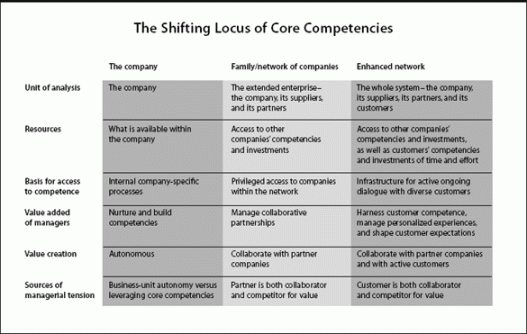remembering coimbatore krishnarao prahalad
Who? Better known as C.K. Prahalad. A brilliant thinker.
I don’t know that I am a great thinker. But I am a great collector of things. And things include other’s ideas and that includes great thinking ideas – or great thinking construct. And once I have collected I am relentless in reapplying what I have collected hopefully to the benefit of the challenge I am applying it against.
So I say all of this as a preface to taking a moment to reflect upon the death of one of the greatest thinkers of our generation. C.K. Prahalad, on April 16th. As The Economist notes “he revolutionized thinking on two big subjects, business strategy and economic development, and made a significant contribution to a third – innovation.”
And don’t be fooled by “economic development.” It is about business strategy. All three subjects are pillars to business thinking.
I have a few pillars of thinking logic I have collected over time and C.K. has provided two massive foundational pillars.
Strategic Intent published in 1989 Harvard Business Review is the first. I still hand out reprints of the article t anyone in my group interested in strategic thinking or business thinking. The second is The Core Competence of the Corporation” published in 1990 also by HBR.
I cannot think of the last business challenge, consulting or simply thinking about, that I have not utilized these two foundation thinking blocks to offer a solution. They have proven critical to any successful resolution I have offered. They are so simple (and non fluffy) and straightforward ideas I believe they are overlooked in today’s business world of buzzwords and branding and fluff.

Amidst all the branding fluff and generational management hype and vision hyperbole it is amazing how these two well articulated thoughts slice through everything and cut to the core of any discussion. Using these thought constructs eliminates confusion in business discussions and clarifies key components. I sometimes find their lack of fluff makes them difficult to discuss with management because they frankly don’t have fluff (or catchy nomenclatures to make them seem contemporary). But these ideas are neither old nor contemporary. They are timeless. (and I haven’t even gotten to his innovation thinking).
For me (and I am sure other will debate) these ideas have been a vivid and vibrant telescope providing clarity of the business north star regardless of the cloudiest business night skies. Poetic thoughts aside these ideas work today. And they will work tomorrow regardless of what the next business fad is.
In my eyes the core competency discussion is possibly the most overlooked discussion in the business environment. I don’t debate an essence (or culture or vision or whatever you want to discuss) is valuable but never, and I use the word never rarely, before you have isolated the business core competency discussion. And, frankly, it is a difficult discussion in this world of ‘wanting to do everything’ combined with management’s ongoing lack of ability to concisely articulate a core competency. (that is my own personal rant).
I will leave his thinking on innovation for another post. But, suffice it to say, he issued a spectacular book on innovation so far ahead of its time people today forget it as they try to uncover ways of organizational innovation (and internal brainstorming or collaboration consensus).
Prahalad’s thinking are my bookends on how I approach business thinking. Everything else fits within the bookends. The only other business pillar key to me (within the bookends) remains the J. Walter Thompson Consumer Buying System). Another simple business thinking construct overlooked in its simplicity.
So here is a nod to the passing of one of our generation’s greatest thinkers. And possibly his greatest legacy is that he articulated such brilliant thinking without getting bogged down in the nuts & bolts and yet with incredible imagination so well that even a pea like brain like mine could apply the pillars of the ideas daily. I never met Prahalad but I owe him much more than I can express in one post.


Leave a Comment